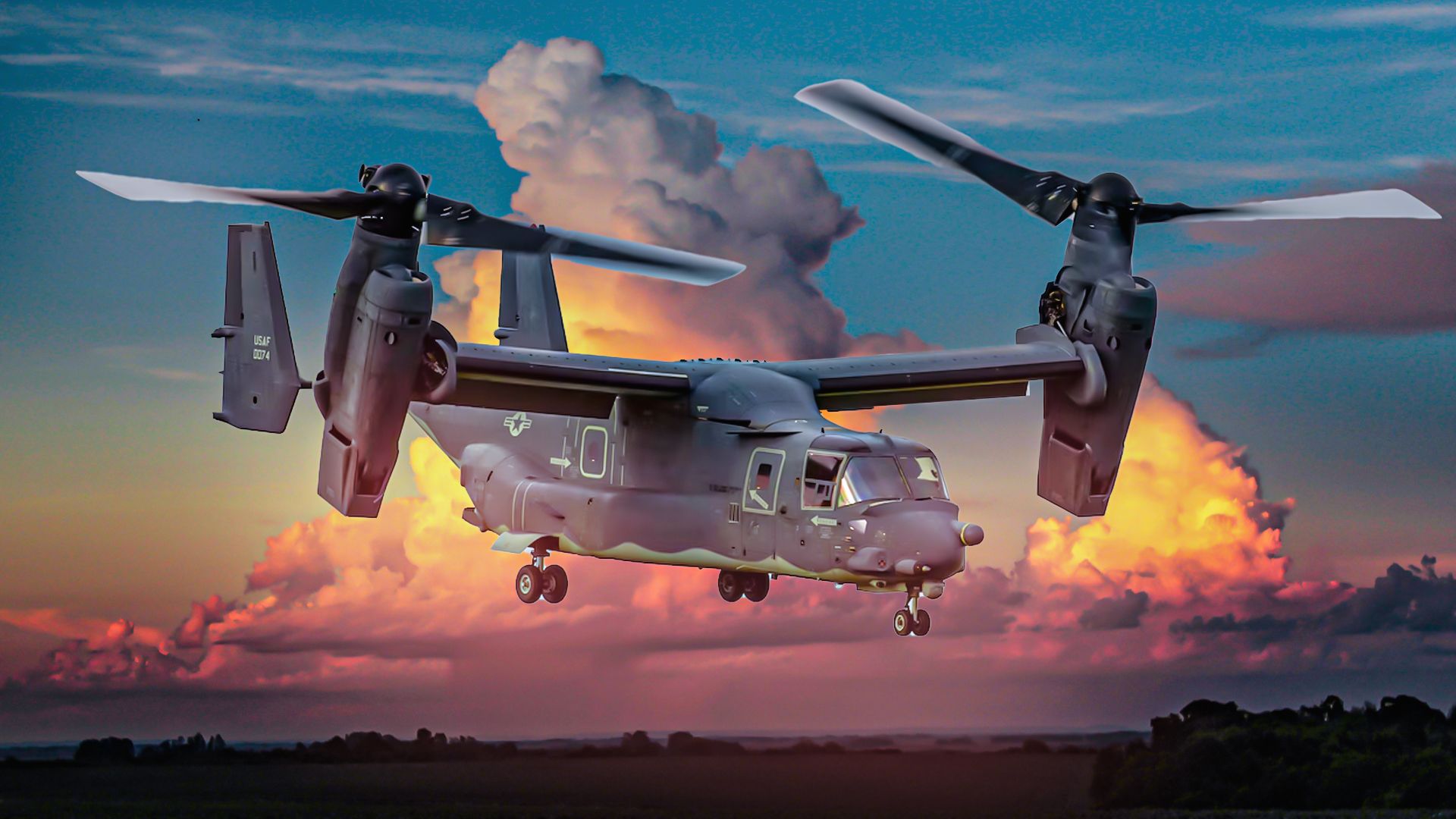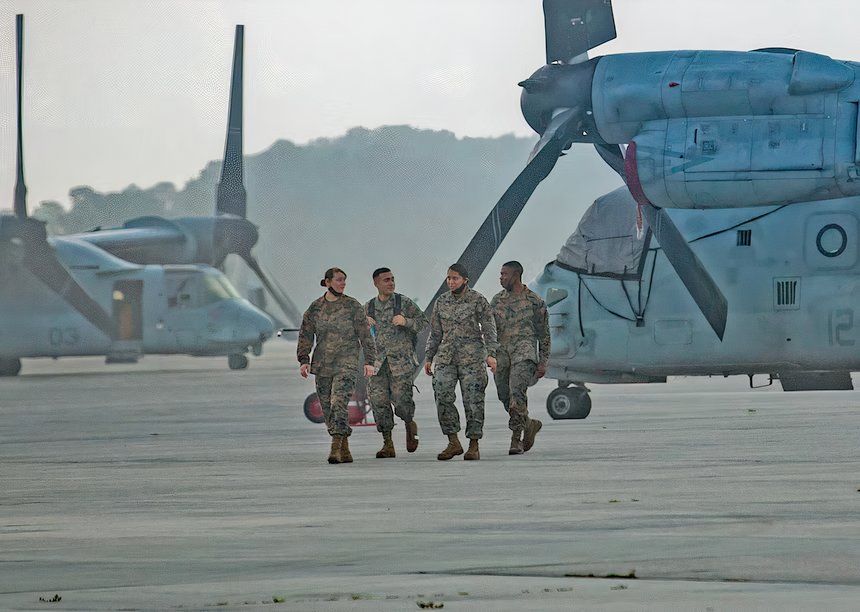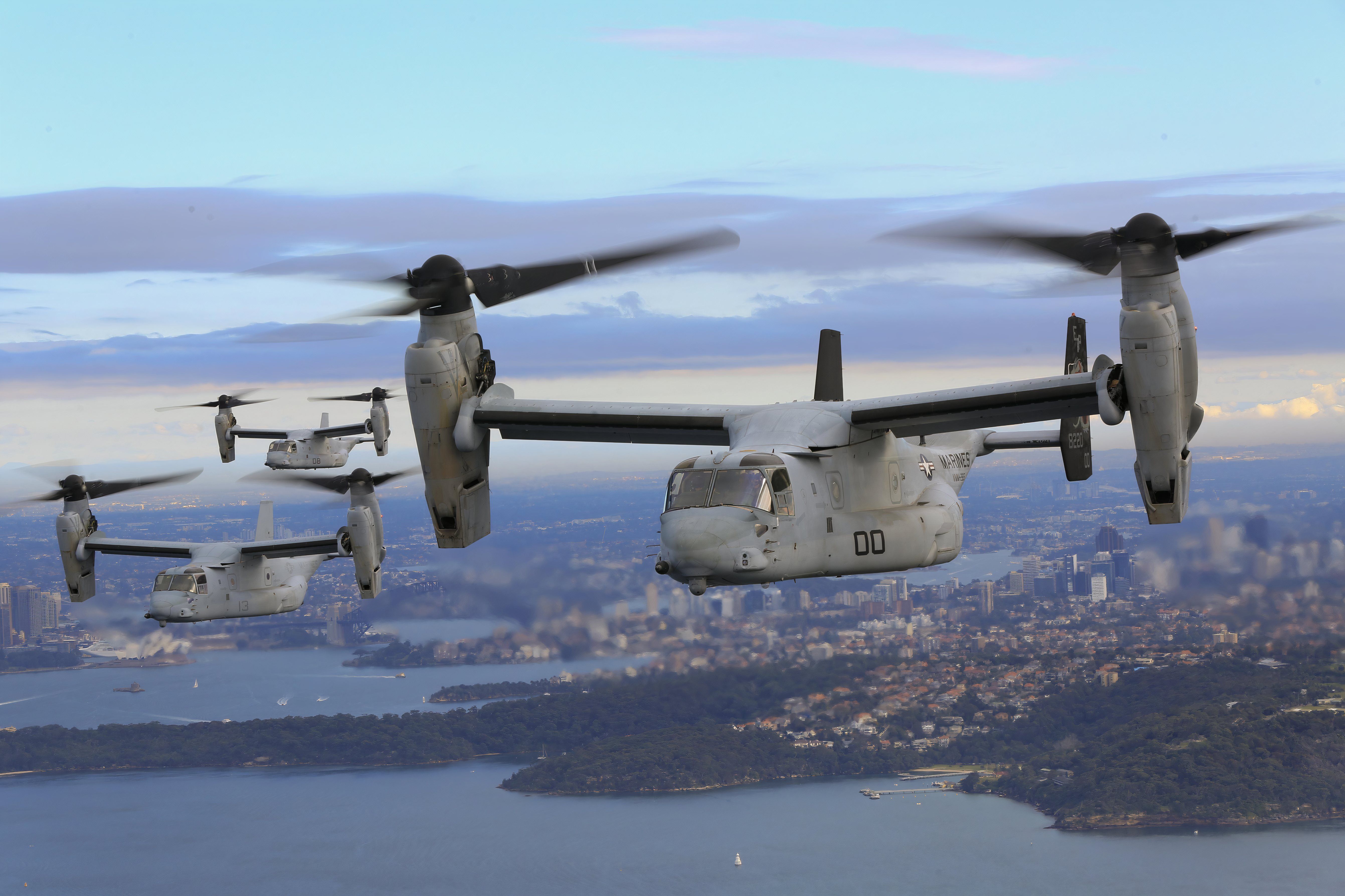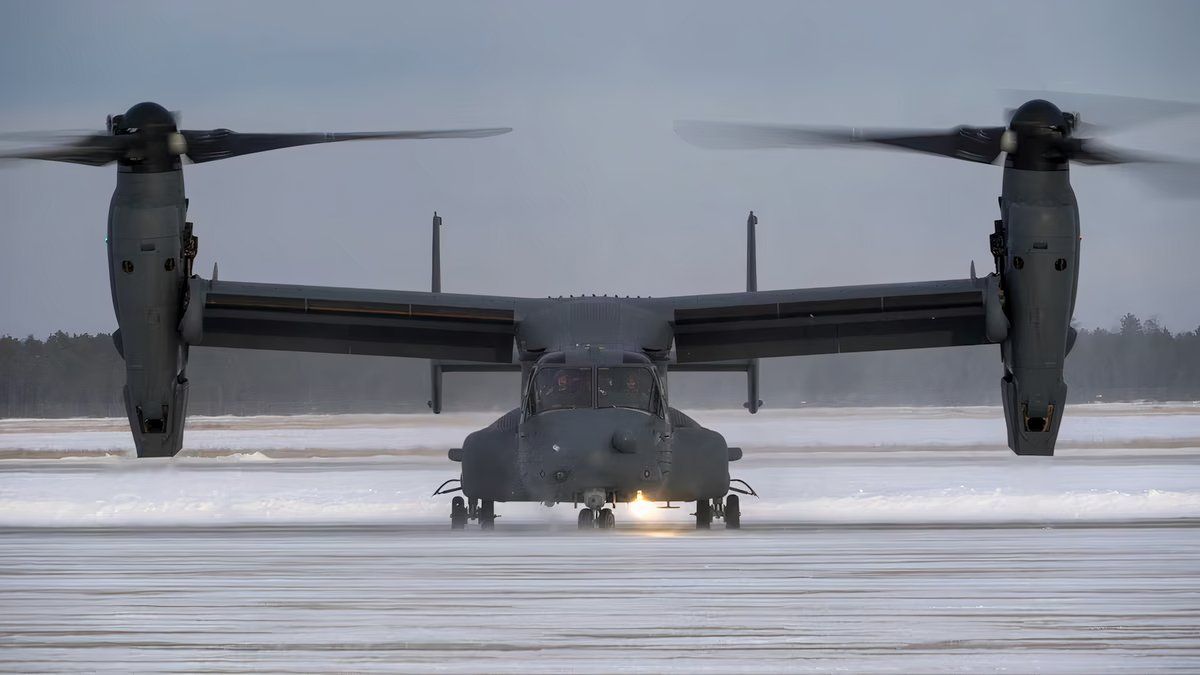Summary
- The V-22 Osprey is a versatile aircraft with a unique tiltrotor design for vertical takeoff/landing.
- It features advanced avionics and integrated threat countermeasures for missions in high-threat environments.
- The Osprey plays critical roles in embassy rescue missions and disaster relief efforts effectively.
In the world of military aviation, few aircraft can claim the versatility and adaptability of the Bell Boeing V-22 Osprey. Since its introduction into service in 2007, the Osprey has proven its worth in a variety of operational roles for the US Air Force, Navy, and Marines, including troop transport, special operations, search and rescue, and beyond.
The Osprey’s unique tiltrotor design (rotating engine nacelles) allows for vertical takeoff, landing, and hover capabilities, much like a helicopter, while preserving the range and speed of a turboprop aircraft. Due to the nature of its missions, which often take place in low-altitude, high-threat environments, the V-22 incorporates features that include:
- Advanced avionics systems
- Terrain-following radar
- Forward-looking infrared sensor
- Integrated threat countermeasures
- M240 .308 caliber or M2 .50. caliber machine gun mounted on the aircraft’s ramp
- GAU-17/A 7.62 mm six-barrel gatling gun mounted on the belly of the aircraft, controlled remotely from inside the aircraft (optional)
Check out the video below for a quick primer on the Osprey, featuring the US Marines variant, the MV-22.
The US Air Force variant of the Osprey, the CV-22B, is designed for long-range special operations missions, featuring additional wing fuel tanks and other equipment such as the AN/ALQ-211 and AN/AAQ-24 Nemesis directional infrared countermeasures.
The US Navy variant of the Osprey, the CMV-22B, shares many features with the MV-22, supplemented by an extended operational range fuel system, improved lighting for cargo loading, a public address system, and beyond line-of-sight high-frequency radio.
The base unit cost of a V-22 Osprey is $90M
In this article, we will explore five missions that showcase the V-22 Osprey’s unique capabilities and its critical role in enhancing the operational effectiveness of the United States military.
5
Attacks on US Embassy prompt US Marine deployment
Marines arrive in Baghdad via MV-22 Osprey
When the Kataib Hezbollah (KH) militia attacked Iraqi bases hosting US-led forces during Operation Inherent Resolve in December 2019, killing one US civilian and injuring four US service members, the US struck back. After a series of retaliative US airstrikes, the US Embassy in Baghdad was stormed by a mob, including members of the KH militia.
In response to the mob attacks, the Pentagon deployed Marines from the Special Purpose Marine Air-Ground Task Force to the US Embassy in Baghdad. Initially stationed in Kuwait, the Marines arrived at the US Embassy under cover of darkness via MV-22 Ospreys, landing directly within the compound walls and securing the embassy, as shown in the unclassified video below.
US Marines are well prepared for precisely this type of mission. In the video below, US Marines simulate securing a US embassy and rescuing US personnel using MV-22 Ospreys.
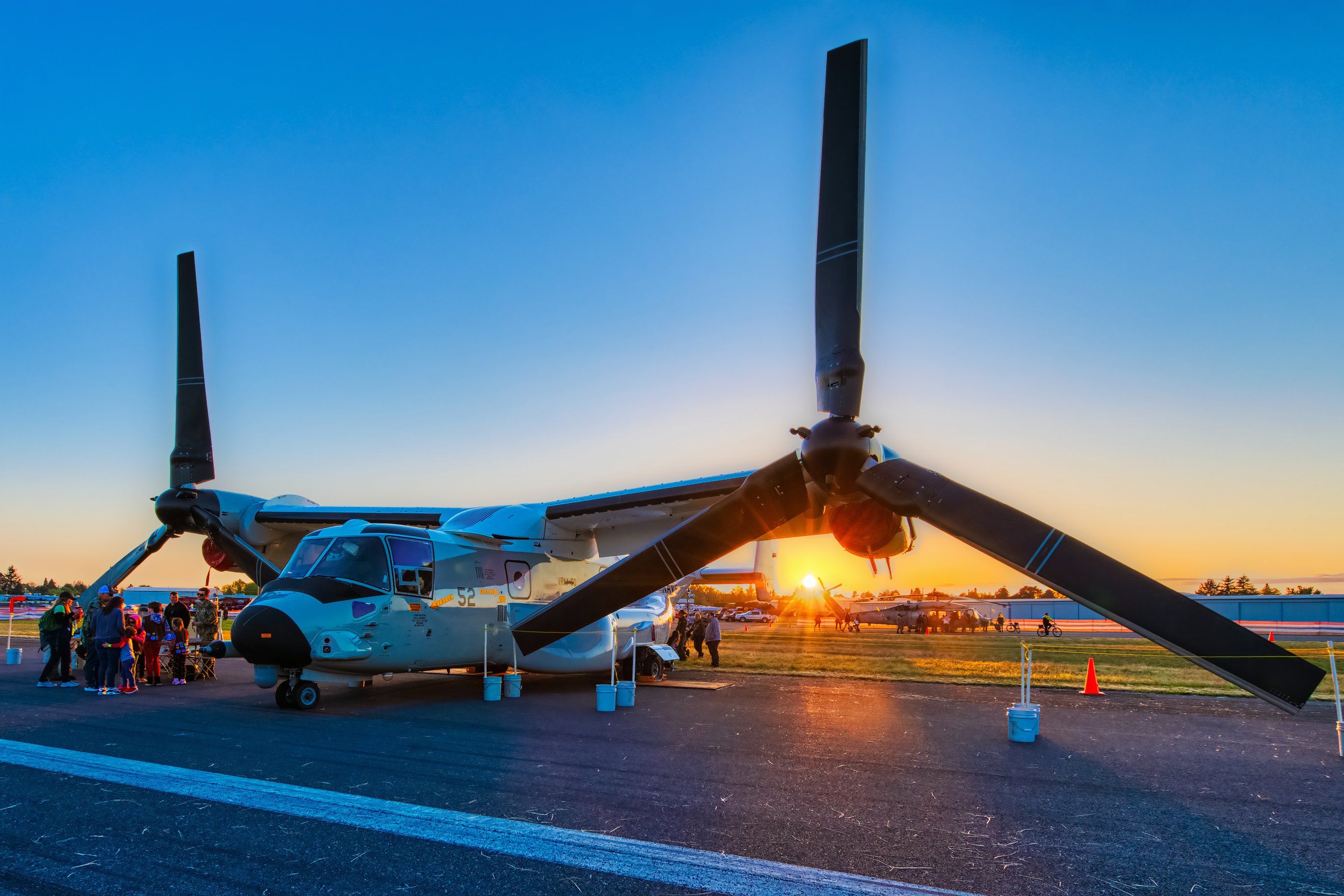
Related
Bell Boeing V-22 Osprey Restrictions To Remain Until Middle Of 2025
The V-22 Osprey family has a serious problem grinding gears – but a remedy is in the works.
4
Massive earthquake strikes Haiti
MV-22 Ospreys provide much-needed relief
Following the devastating 7.2 magnitude earthquake that hit Haiti in 2022, leaving more than 2,200 people dead, 12,200 more injured, and 650,000 men, women, and children without food, water, and shelter, US Marine MV-22 Ospreys played a crucial role in the Operation Unified Response humanitarian aid relief efforts in the region.
“The Vertical Takeoff and Landing (VTOL) capability of the MV-22 meant it could make use of nearby naval warships as a fuel source and that the aircraft was not limited to runways or other prepared surfaces, allowing supplies to be delivered to more remote, unprepared landing zones when and where they were needed.” –US Navy
According to the US Navy, five V-22 Ospreys flew more than 5,300 nautical miles, transported 320 aid workers, and delivered more than 234,100 pounds of food, water, shelter, and medical supplies to Haitians in need. Below, US marines prepare to board MV-22 Ospreys during the humanitarian aid mission in Haiti.
“The MV-22’s extended range and higher cruising speeds allowed it to complete a greater number of deliveries per day than the supporting helicopters, proving it to be the workhorse of the relief effort.” – US Navy
Photo: US Navy
![6138639 - EOTG Rappelling training with Japanese V-22 Osprey [Image 8 of 15]](https://static1.simpleflyingimages.com/wordpress/wp-content/uploads/2024/03/6138639.jpg)
Related
Japan Resumes V-22 Osprey Flights 4 Months After Deadly Crash
The Japanese Ground Self-Defense Force has also resumed operations of their V-22 Ospreys. Read on for details how the V-22 was made safer.
3
Iranian ballistic missile attack
V-22 pilots awarded medals for special forces evacuation
On January 7, 2020, three CV-22B Ospreys took part in a mission that evacuated 194 special operations personnel amidst an Iranian ballistic missile attack on US-led coalition forces at al-Asad Air Base, Iraq. Despite various challenges including equipment malfunctions, blocked runways, and an aggressive high-threat environment, the V-22 pilots were able to successfully execute the evacuation.
For their heroism, Osprey pilots Lt. Col. Adam C. Darrow and Tech. Sgt. Samuel T. Levander were awarded the Distinguished Flying Cross, while Lt. Col. Adam C. Leachman received the Bronze Star Medal.
Photo: US Navy
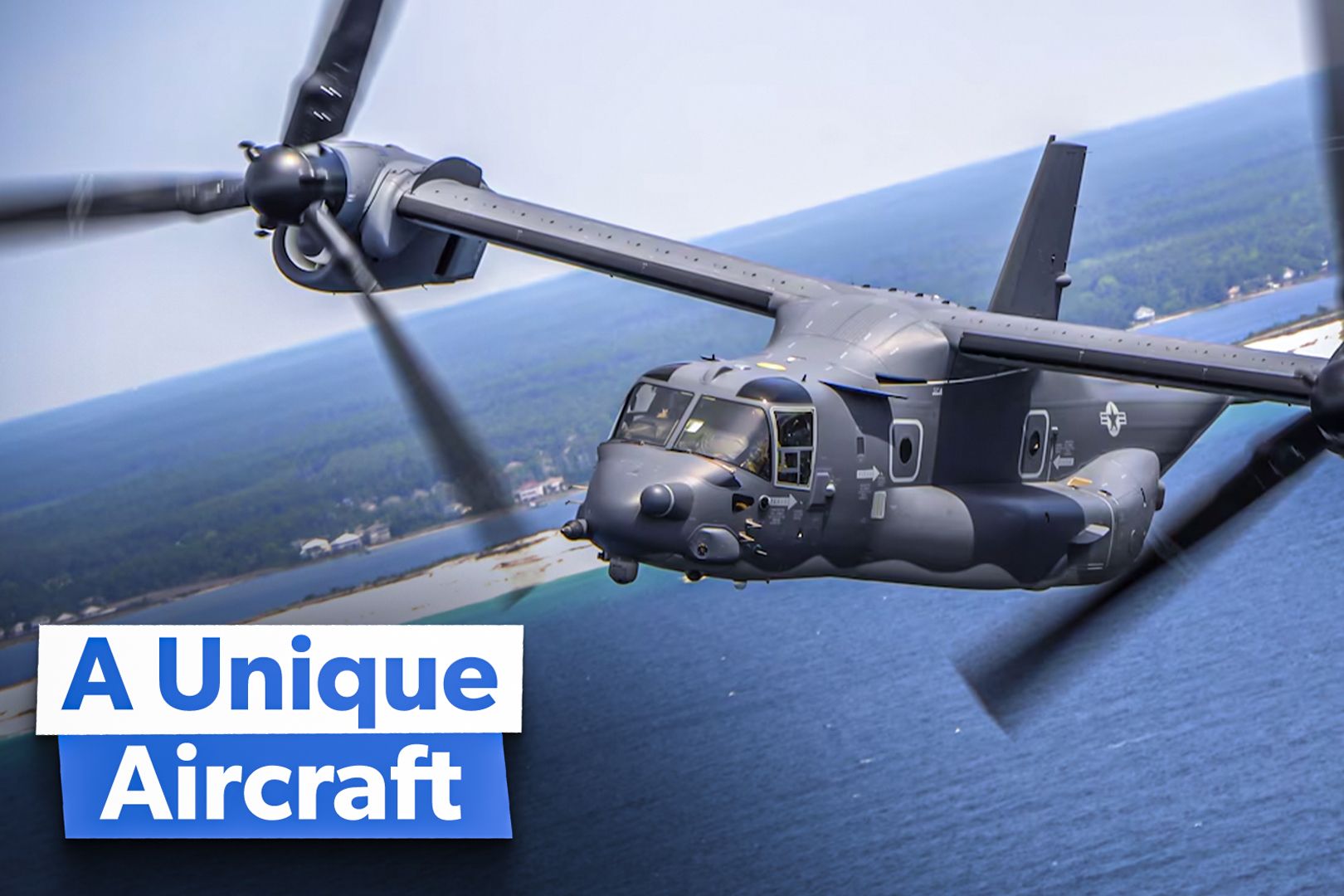
Related
What Makes The V-22 Osprey Unique Among US Military Aircraft?
Despite tragic teething issues, the V-22 Osprey keeps soldiering on. Simple Flying examines what makes it unique amongst US military warbirds.
2
Operation Cobra’s Anger
More than just a killer code name
On December 4, 2009, the US Marines MV-22 participated in its first combat mission, Operation Cobra’s Anger. MV-22s assisted in transporting 1,000 US Marines and 150 Afghan troops into Now Zad Afghanistan to take part in a US-led mission to disrupt the Taliban’s supply lines and communications operations.
US-led forces saw little resistance and suffered no casualties during the mission, while seven Taliban fighters were killed. More importantly, once a haven for Taliban forces, Now Zad became the center for mission expansion to outlying villages under Taliban control. Operation Cobra’s Anger is considered a critical turning point in the war in Afghanistan.
“When you’re going to a place without a runway, you need a rotorcraft. When you’re going a long way to a place without a runway, you need a tiltrotor,” – Lieutenant Colonel Anthony Bianca, commanding officer of Marine Medium Tiltrotor Squadron 261
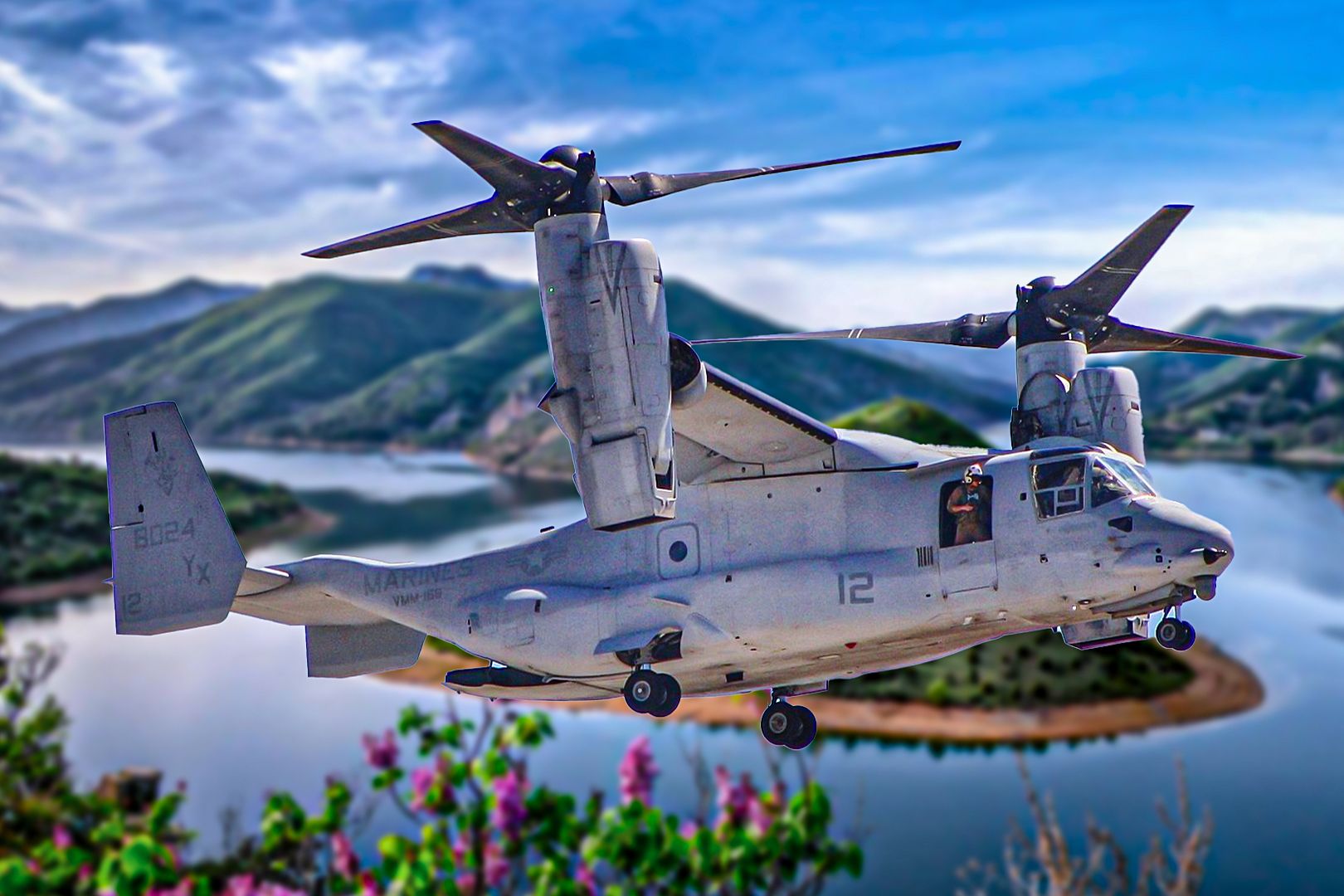
Related
How & Why: The US Military Plans To Keep MV-22 Ospreys In Service For +30 More Years
With procurement of the V-22 Ospreys coming to a close, attention is switching to keeping them flying until 2060 or beyond.
1
Operation Odyssey Dawn
Eagle down, Osprey to the rescue
2011 saw the US join an international coalition to enforce U.N. Security Council Resolution 1973 in Libya, which demanded an immediate cease-fire in response to the First Libyan civil war. Operation Odyssey Dawn was the US code name for their role in this joint international mission.
When a USAF F-15 Strike Eagle crashed in northeast Libya on March 22, 2011, two US Marine MV-22s, along with two AV/8B Harriers and two CH-53E Super Stallions, were dispatched to recover the downed pilot.
The aircraft were launched off the USS Kearsarge within 30 minutes of the crash. Once on site, a pair of laser-guided 500-pound bombs were dropped by the AV/8B harriers while an MV-22 descended to extract the pilot and return him to safety. Remarkably, the rescue mission took just 90 minutes from launch to landing aboard the USS Kearsarge.
“Total time from launch to return – 90 minutes roundtrip. That’s what an Osprey gets you, that speed.” – US Marines
It should be noted that the U.S. military grounded its fleet of V-22s on December 6th, 2023, after eight US military service members died tragically in a USAF CV-22B crash in Japan on November 29th due to a mechanical failure. Three months later, the Osprey returned to service following a Naval Air Systems Command (NAVAIR) investigation, which concluded:
“Maintenance and procedural changes have been implemented to address the materiel failure that allow for a safe return to flight. The U.S. Navy, U.S. Marine Corps, and U.S. Air Force will each execute their return to flight plans according to service specific guidelines.” – NAVAIR
Photo: US Navy
Whether transporting troops, conducting evacuations, providing humanitarian aid relief, or recovering downed pilots, the V-22 Osprey has proven its value and versatility time and again. Its ability to operate in complex environments sets it apart and underscores its critical role in enhancing the operational effectiveness of the United States military.
|
V-22 Osprey Specifications |
|
|---|---|
|
Crew |
One pilot, copilot, and two flight engineers |
|
Wingspan |
84 feet 7 inches (25.8 meters) |
|
Length |
57 feet 4 inches (17.4 meters) |
|
Height |
22 feet 1 inch (6.73 meters) |
|
Power plant |
Dual Rolls Royce-Allison AE1107C engines |
|
Thrust |
6,200 horsepower per engine |
|
Speed |
277 mph (241 knots) |
|
Payload |
Up to 32 troops or 10,000 pounds of cargo |
|
Inventory |
46 |

Related
What Makes The V-22 Osprey Unique Among US Military Aircraft?
Despite tragic teething issues, the V-22 Osprey keeps soldiering on. Simple Flying examines what makes it unique amongst US military warbirds.

